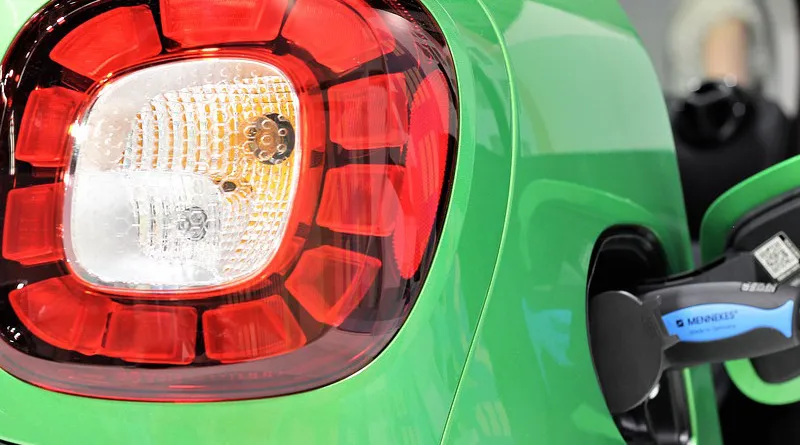An Oversupply Of EV’s From Foreign Manufacturers And A Lack Of Demand May Be A Financial Shock To The World – OpEd

Until the current elite owners can demonstrate to the middle-income and those on fixed incomes that their EV’s are their primary family workhorse vehicles, and a solution to shipping potentially flammable EV batteries to American ports is resolved, may all be a prelude to a financial crisis brewing for the auto industry.
Amid tougher emissions regulations worldwide, established automakers are racing to add more EVs to their lineup. A Reuters analysis found that global automakers such as Audi, BMW, Hyundai, Fiat, Volkswagen, GM, Ford, Nissan, Toyota, Daimler, and Chrysler plan to spend a combined U.S. $300 billion on EVs over the next decade as car companies are betting big on EV’s. Most of the EV’s will be manufactured in foreign countries far removed from American ports.
China came from zero production in 1950, to 2019 where it now produces more cars than the USA, Japan, and India collectively. The 6-minute video of the automobile manufacturing “needle” shows how the foreign manufacturing dominance occurred over the that 69-year period.
Automobiles manufactured per year.

Bringing those foreign built cars to America may be an insurmountable insurance problem. The Felicity Ace, a 650-foot-long cargo ship carrying hundreds of millions of dollars’ worth of luxury cars sunk in March 2022.
The salvage crew working on the burning ship said electric-vehicle batteries were part of the reason it was still aflame after several days. The estimated market value of the Felicity Ace was $24.5 million, while the total value of the 3965 vehicles could be over $500 million.
With potential fires from EV batteries, who’s going to take the insurance responsibility for their safe passage from the foreign manufacturers to American ports, the cargo ships, or the manufacturers?
With more than forty percent of the EV’s in America being in California at the end of 2020, the EV popularity in California has gotten California Governor Newsom so excited to that he issued an executive order to ban the sale of gas-powered vehicles by 2035. The EV popularity in California inspired President Biden to want the rest of the country to follow California’s lead and issued a new executive order that pushes for half of all new cars sold in America by 2030 to be electric vehicles.
Even with the great California year-round weather, the states’ EV user’s experiences do not bode well for projected EV sales in America as the states’ EV users may be sending a caution-to-the-wind (no pun intended) message to America that the EV usage in the state reflects very conservative notices to future EV owners. A few reasons why Californians may be sending the wrong message to America are:
- The limited usage of the EV’s of about 5,000 miles per year is a reflection that the EV is a second vehicle, for those that can afford a second vehicle, and not the family workhorse vehicle.
- The primary owners of EV’s are the highly educated and financially well off, and not representative of the majority that are middle to low income folks, or those on fixed incomes.
- EV owner incomes rank among the highest in the country which may be a reflection of home owners that have easier access to charging their EV from their multi-car garages, or for those folks living in new apartments that may have access to more convenient EV charging capabilities. Most car owners park in the street.
- According to ValuePenguin insurance, because electric vehicles cost more outright and are more expensive to repair, the average car insurance for an electric vehicle is about 23 percent more expensive than the cost for the equivalent combustion model.
- The ethnicity of Tesla owner’s skews toward Caucasians, at 87 percent. Owners who identify with Hispanic ethnicity make up 8 percent of Tesla owners, leaving 5 percent to other ethnicities.
- In California, the state with almost half the EV’s in the entire country, from that limited elite ownership group, there is a growing percentage of those California EV users that are switching back to gasoline cars, which is sending a message that may further deflate EV growth projections.
As Pew Research reported in June, “In each of the past three years, EVs accounted for about 2% of the U.S. new-carmarket.” In 2020, EV sales totaled 252,548, less than 3 percent of the 14,240, 548 passenger and light trucks sold. The reasons why EVs aren’t grabbing consumers by the tailpipe are many, but the main ones are affordability, charging and range functionality, and the possible exposure to inclement weather.
Another challenge for the EV growth is the EV charging dependence on intermittent electricity generated from breezes and sunshine. Adding EV charging loads onto the grid that is becoming more unstable is like putting salt in the wound. Power outages are now commonplace in California and Texas with more to follow throughout the nation as we adjust to a life dependent upon the time of day and the weather.
Until the current elite owners can demonstrate to the middle-income and those on fixed incomes that their EV’s are their primary family workhorse vehicles in all kinds of weather conditions, the less fortunate will most likely remain reluctant to buy into the EV evolution. Growing the supply chain for EV’s without a corresponding growth in demand, could be an economic disaster in the works.
Growing the supply chain in foreign countries for EV’s without a corresponding growth in demand or an effective way to transport via cargo ships those vehicles built in countries far removed from American ports, could be an economic disaster in the works.
Click here to have Eurasia Review’s newsletter delivered via RSS, as an email newsletter, via mobile or on your personal news page.
View on Eurasia Review Website
One of our country’s most important freedoms is that of free speech.
Agree with this essay? Disagree? Join the debate by writing to DailyClout HERE.





